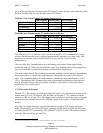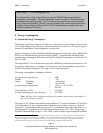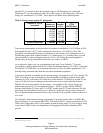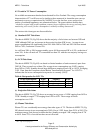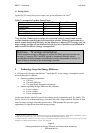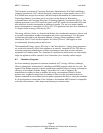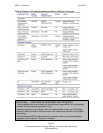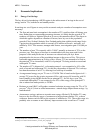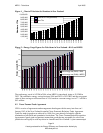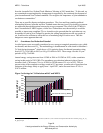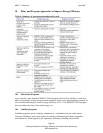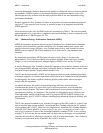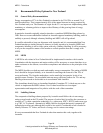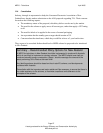
MEPS − Televisions April 2005
Page 20
A study produced for the Energy Efficiency and Conservation Authority by
Wise Analysis Ltd
9 Economic Implications
9.1 Energy Cost Savings
The key driver for introducing a MEPS regime is the achievement of savings in the cost of
energy used in TVs, both the on and standby modes.
In arriving at a set of figures to carry out the economic analysis a number of assumptions were
necessary:
• The first and most basic assumption is the number of TVs, and how that will change over
time. Rather than a compounding percentage increase it is likely that the growth of TV
numbers will follow a logistical growth or S-curve with saturation effects. The degree to
which this applies depends on a number of factors, but a key one is the population
growth of New Zealand. Statistics New Zealand predict that with their mid-range Series
5 projection, the population which is currently 4.08 million will reach - and peak -
at 5
million by 2041. This assumes, amongst other factors, a net migration gain of 10,000 per
year.
• The numbers of new TVs currently sold is 318,847 annually an increase of 25% on the
previous year. This degree of increase is unsustainable in the long term, and for the
purposes of this analysis the rate of increase was reduced each year by a factor
proportional to the inverse of the population increase to the power of five. This gives a
reasonable approximation to an S-curve effect. All new TVs are assumed to be used as
the principal TV in a household, with 20% of principal TVs being retired to second and
subsequent TV status.
• The number of TVs disposed of - or becoming unused - was assumed to be 10% of the
stock of second and subsequent TVs. At this rate, the number of disposed TVs is always
less than the number of new TVs, allowing for a build-up of numbers.
• Average annual energy use per TV now is 152 kWh. This is based on the figures in 4.1 -
average TV power for the set mix at present of 80w, and on-use of 4 hours/day with 20
hours standby giving 440Wh for the first or principal TV, for 344 days a year. The
second and subsequent TVs are assumed to use 50% of the energy of the principal TV
due to reduced on-mode periods, or 220Wh.
• Business as usual (BAU) will produce a natural reduction in energy usage for TVs of 2%
per year
14
(Fig 6.1) from so-called autonomous - natural design improvement savings - by
manufacturers.
• Autonomous savings, and moves towards more energy efficient LCD slimline TVs may
however also be offset by moves of consumers to larger plasma slimline TVs, or those
with more features such as IRD, at the expense of medium size TVs. Thus at this stage it is
probably wise to assume no net efficiency improvements in the overall new TV stock.
14
Huenges Wajer B.P.F., Siderius P.J.S., Analysis of Energy Consumption and Efficiency Potential for TVs in on-mode, EC report November
1998 http://www.vhknet.com/download/TV_on-mode_final_report.pdf



